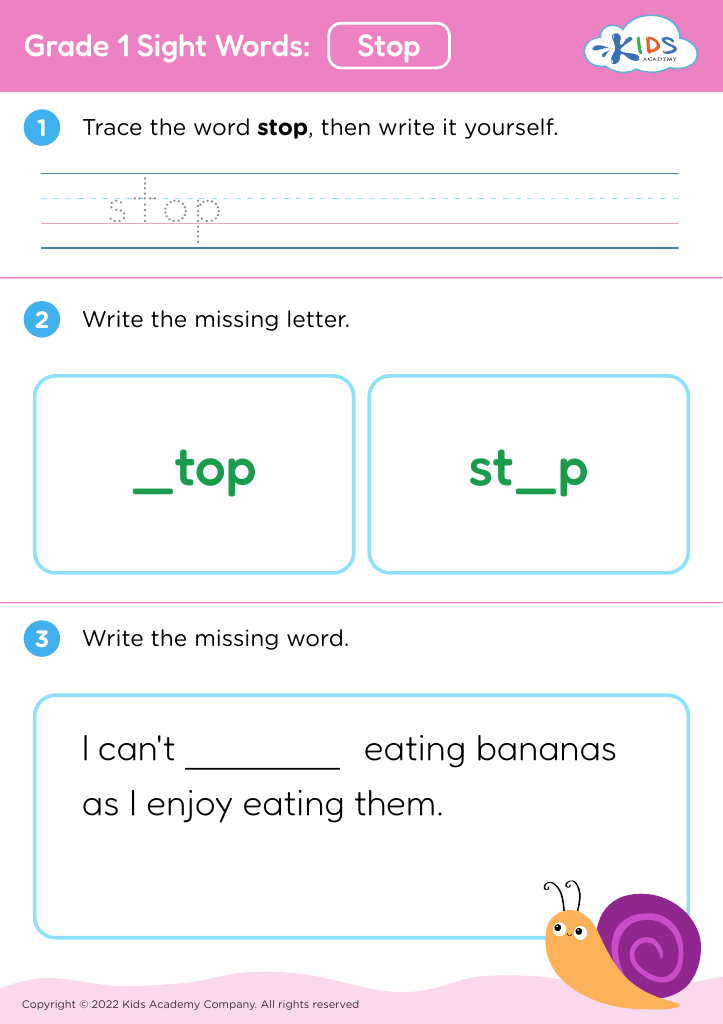Understanding patterns Reading Worksheets for Ages 6-9
5 filtered results
-
From - To
Unlock the world of learning with our "Understanding Patterns Reading Worksheets" specially designed for ages 6-9. These engaging resources help young learners recognize and interpret patterns in text, enhancing their reading abilities and comprehension skills. Each worksheet features vibrant illustrations and easy-to-follow exercises that promote critical thinking, making learning fun and interactive. Whether in the classroom or at home, these worksheets empower children to identify patterns in sentences and stories, fostering a stronger foundation for reading success. Dive into our collection and watch your child's reading proficiency soar as they master the art of understanding visual and textual patterns.
Understanding patterns in reading is crucial for children aged 6-9 as it lays the foundation for their overall literacy development. At this stage, children are transitioning from learning to read to reading to learn, making pattern recognition an essential skill. Patterns help children identify repetitive themes, phonetic sounds, and narrative structures, which enhance their comprehension and prediction abilities. When children can recognize patterns, they become more adept readers, better able to navigate complex texts.
Parents and teachers should prioritize teaching patterns because they enhance critical thinking. Recognizing similarities and differences in texts encourages students to make connections, ask questions, and draw conclusions. Moreover, teaching patterns in reading can boost a child's confidence. When students notice that certain sounds or story structures repeat, they gain a sense of accomplishment, making reading a more enjoyable experience.
Furthermore, an understanding of patterns can improve vocabulary acquisition. By incorporating patterns, children can better grasp context clues, which aids in deciphering unfamiliar words. For children, these skills developed through recognizing patterns will not only serve reading but will also benefit their overall academic journey and foster a lifelong love for learning.


























